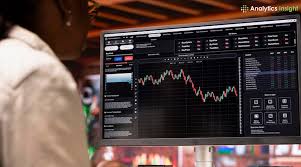Understanding How Crypto Trading Works 4

Understanding How Crypto Trading Works
The world of cryptocurrency has taken the financial sector by storm, redefining how we perceive currency and investment. In this article, we will delve into the mechanisms of crypto trading, elucidating the key principles, tools, and practices that characterize this innovative market. For further insight into technological advancements influencing the trading space, check out this how crypto trading works https://insidehpc.com/2021/01/fpga-maker-achronix-to-list-on-nasdaq-through-merger-with-ace-convergence/ discussing market catalysts.
Crypto trading refers to the buying and selling of cryptocurrencies, which are digital or virtual currencies that use cryptography for security. Unlike traditional currencies issued by governments, cryptocurrencies are decentralized and typically operate on technology called blockchain. This technology serves as a ledger of transactions, enabling secure and transparent peer-to-peer interactions.
At its core, crypto trading operates like any other form of trading. Traders aim to profit from the price fluctuations of cryptocurrencies. They can either buy low and sell high, or sell high and buy low (short selling). The fundamental goal remains the same: to exploit the volatility inherent in the cryptocurrency markets to make a profit.
The Basics of Cryptocurrency Trading
Before delving into advanced strategies, it’s essential to understand the basic components of crypto trading. Here are some of the fundamental aspects:
- Cryptocurrency Exchanges: These platforms allow users to buy, sell, and trade cryptocurrencies. Popular exchanges include Coinbase, Binance, and Kraken. Each exchange has its unique set of tools and features for traders.
- Wallets: Digital wallets store cryptocurrencies. There are different types, including hot wallets (online) and cold wallets (offline), each with their respective security considerations.
- Market Orders vs. Limit Orders: A market order executes immediately at the current market price, whereas a limit order sets a specific price at which to buy or sell, ensuring greater control over one's trades.
- Trading Pairs: Most cryptocurrencies are traded in pairs, such as Bitcoin (BTC) to Ethereum (ETH). Understanding how to read these pairs is crucial for trading.
Market Analysis
Traders utilize various methods to analyze the market and make informed trading decisions. The two primary types of analysis are:
- Technical Analysis: This method involves examining historical price data and volume statistics to forecast future price movements. Traders often use charts, indicators, and patterns to identify trends.
- Fundamental Analysis: Fundamental analysis considers the overall economic factors that might affect cryptocurrency prices, including news events, regulatory changes, and technological developments.
Trading Strategies
There are various strategies traders employ in the cryptocurrency market. Here are some popular ones:

- Day Trading: Involves making multiple trades within a single day, capitalizing on short-term volatility. Day traders often rely heavily on technical analysis and market signals.
- Swing Trading: This strategy focuses on capturing gains in an asset over a few days to weeks. Swing traders analyze price graphs and market trends to identify potential entry and exit points.
- HODLing: A long-term strategy where investors buy cryptocurrencies and hold them over a long period, regardless of market volatility. The term "HODL" originated from a misspelled online post, emphasizing the belief in long-term value.
- Scalping: This strategy aims for small profits through numerous trades throughout the day. Scalpers often engage in high-frequency trading, utilizing advanced software to minimize response times and maximize efficiency.
The Importance of Risk Management
In crypto trading, risk management is crucial due to the market's inherent volatility. Effective risk management strategies include:
- Setting Stop-Loss Orders: These are automated orders that sell a cryptocurrency once it reaches a specific price, thereby limiting potential losses.
- Diversification: Spreading investments across different cryptocurrencies can lower overall risk. By not putting all funds into one asset, traders can offset losses with gains from others.
- Position Sizing: Determine the size of a trade based on overall portfolio risk tolerance. This involves calculating how much capital to invest in each trade relative to account size.
- Continuous Learning: The crypto space evolves rapidly; staying informed about market trends, news, and emerging technologies can better equip traders to make informed decisions.
The Future of Crypto Trading
As the world increasingly adopts digital currencies, the future of crypto trading appears promising. The integration of advanced technologies such as artificial intelligence and machine learning into trading platforms is expected to transform decision-making processes. Additionally, regulatory clarity and acceptance of cryptocurrencies by financial institutions could further boost market credibility and stability.
As with any investment, potential traders should carry out thorough research and approach the market cautiously, ensuring they are equipped with the necessary tools and knowledge to navigate the dynamic cryptocurrency landscape. With the right strategies and mindset, crypto trading can become not just a speculative venture, but a legitimate path towards financial independence.
